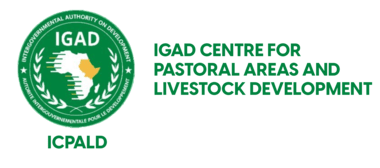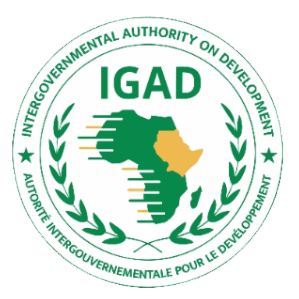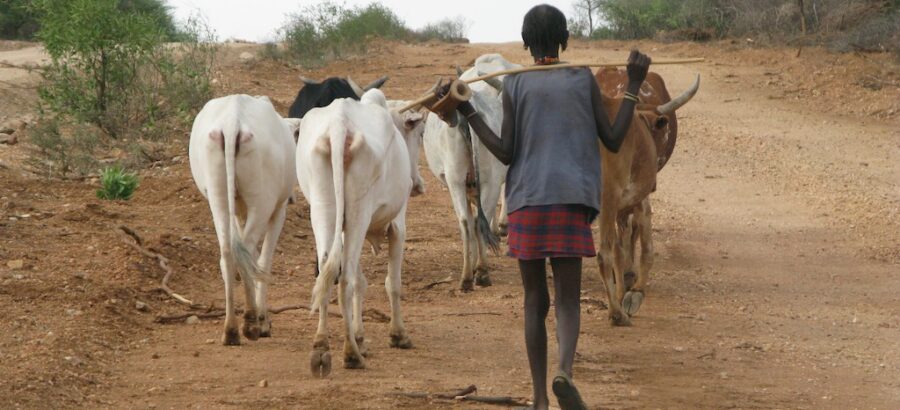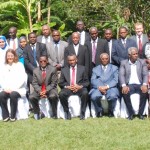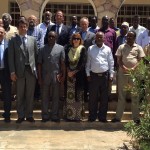Reporters: Drs. Ameha Sebsibe and Sam Wakhusama
Date of the mission: 21-23 April 2015
Place of mission: Djibouti
Introduction
The OIE, in partnership with the FAO organized the Inter-Regional Conference on Rift Valley Fever in Djibouti. The meeting brought together professionals to discuss on New options for trade, prevention and control of RVF from both the Horn of Africa and the Middle East, united by strong and longstanding commercial ties in respect of livestock export/import across the red sea. This Conference also made further headway in helping countries to deal with risks linked with this disease, from a One Health perspective.
The following main presentations were made and discussed under different sessions.
- RVF in the Horn of Africa, East Africa, and the Middle East – a historical overview
- Recent RVF outbreaks is in north-western and Southern Africa
- Available control options
- Vaccination as the standard control option: How to assure quality and efficacy control at production level?
- Diagnostic tests for RVF and role of Reference Laboratories: what is available?
- Research and development for RVF diagnostic tests: what is new?
- OIE Code Chapters relevant to RVF and trade
- Current livestock trade between the Horn of Africa and the Middle East. The new RVF OIE Code Chapter and what it means to inter-regional trade
- Contingency planning for RVF : Kenya
- Decision – support framework for East Africa
- Early Warning Systems in place
- Regional coordination
Recommendations
That countries in the regions should develop an attitude of preparedness rather than reactivity once a crisis is imminent.
On surveillance, outbreak prevention and early response: Countries to recognise that RVF outbreaks might occur in the region within the next 18 months, given the extended time period of 8 years since the last outbreaks and the ENSO prediction indications, and are urged to make the following preparations:
- Urgently develop, evaluate and update, when appropriate, their national Contingency Plans using a One Health approach
- develop concrete national action plans for the Early Warning Period based on the updated Contingency Plans and the updated Decision Support Framework
- The national action plans should be prioritized and include updated risk maps and estimation of animal numbers in the risk areas
- Countries should heighten surveillance in high risk areas, e.g. increased monitoring of sentinel herds where available; and increased surveillance in markets or places where large numbers of animals are traded or congregate
- Countries previously affected by RVF should consider to start carrying out targeted vaccination campaigns in high risk areas
- Regional organisations including AU-IBAR, IGAD and AU-PANVAC should assist countries at risk to develop a detailed vaccination policy strategy based on the national risk maps
- International and regional organisations are encouraged to support this concrete action operational planning, preferably within the framework of already ongoing existing projects or within joint advocacy platforms for donor funding
On vaccine development
- Vaccine producing laboratories are encouraged to speed up the process to commercialize candidate vaccines in order to overcome the shortcomings of the currently existing vaccines such as availability, safety, stability and DIVA properties
- AU-PANVAC with the support of AU-IBAR is encouraged to carry out quality assessment of existing vaccines as well as an assessment of the production and delivery capacity of vaccine producers of registered vaccines (Smithburn, Inactivated, Clone 13) within a short time period
- OIE in collaboration with AU-PANVAC and IGAD to facilitate the establishment of RVF vaccine banks at regional level based on the results of the aforementioned assessment
On diagnosis of RVF
- Reference Laboratories and pharmaceutical companies are encouraged to increase the production of reagents necessary for serological detection of RVF IgM and IgG and to increase collaboration with AU-Panvac for the evaluation, quality control, production and distribution of diagnostic assays/reagents to national laboratories
- Reference laboratories are encouraged to continue capacity building activities on RVF diagnosis and to consider twinning programmes within the framework of the OIE.
On trade
- Countries are encouraged to translate the revised Code Chapter into their national legislation and regulations and reinforce its application; and to exchange information with trade partners on disease situation in their countries
- Veterinary Services should regularly audit quarantine stations for compliance with national regulations. IGAD and AUIBAR can also support enhancement of their technical capacity to comply through the export quarantine network being formed
On communication
- International and regional organisations are urged to communicate these recommendations jointly via a Press Conference to attract sufficient attention
- National authorities should also disseminate these recommendations at national level
- Develop awareness campaigns among vulnerable populations such as farmers, abattoir workers, and other stakeholders
- Establish regular communication channels between public health and veterinary authorities to ensure disease surveillance results are timely reported.
Observations and next steps
- IGAD and AUIBAR through SMP supported the participation of IGAD MS
- ICPALD presented summary of regional projects that contribute to the control of RVF
- ICPALD in collaboration with MS and partners to support sharing of the above recommendations to enhance preparedness in case RVF occurs in the coming 18 months
- ICPLAD to develop regional RVF strategy
